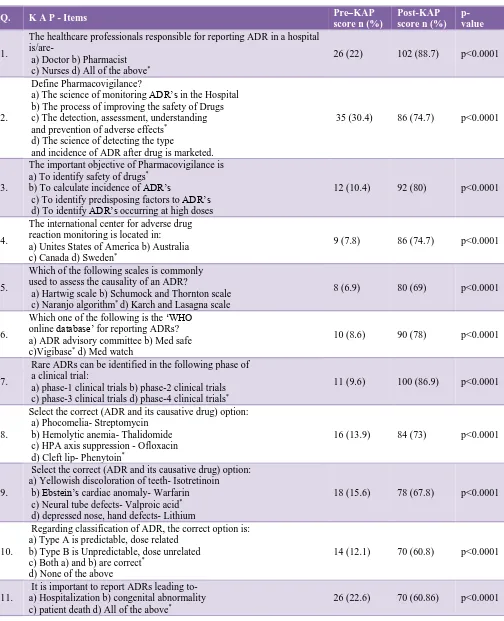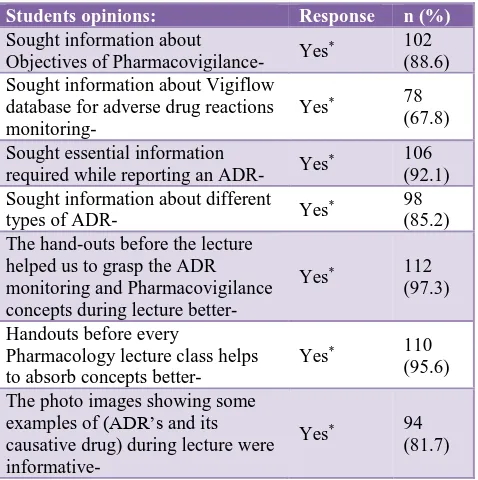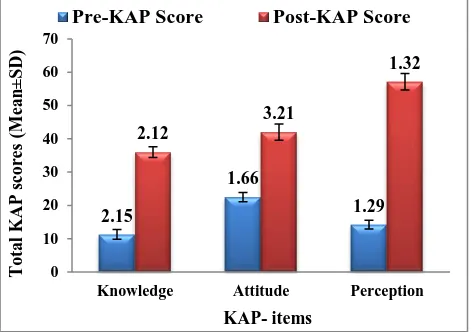Knowledge, attitude, perceptions and assessment of effectiveness of educational intervention on Pharmacovigilance among undergraduate medical students at Gulbarga Institute of Medical Sciences, Kalaburagi, India
Full text
Figure



Related documents
In the present study, we found that patients who experienced acute STEMI, even though they were taking statins and had achieved their LDL cholesterol control goal, had an omega-3
In using the simple "causal" model to adjust for nonattendance and contami- nation, we assume that (i) a subject who switches treat- ment immediately after randomization does
Background: The prevalence of bacterial vaginosis (BV) and vaginal microbiota types varies dramatically between different populations around the world. Understanding what
A large observational study in children and adoles- cents with AR due to grass or tree (birch, alder, hazel) pollen for ≥1 year (with or without intermittent asthma) demonstrated
Background: The aim of this study was to investigate the association and interaction of metabolic syndrome (MetS) and estrogen receptor alpha 1 ( ESR1 ) gene polymorphisms
Four methods have been evaluated by taking the ECG signals from MIT/BIH database.. From the above table it can be inferred that proposed method performs the best in
This study provided evidence that the regulator CpxR contributes to the interbacterial competition activ- ity, survival and virulence of APEC at least through directly regulating
Measurable plasma concentrations of calcitonin were observed in 11 of 33 hypercalcemic cats, and the highest plasma calcitonin concentrations (median, 4.7 [2.1, 28.4] pg/mL;